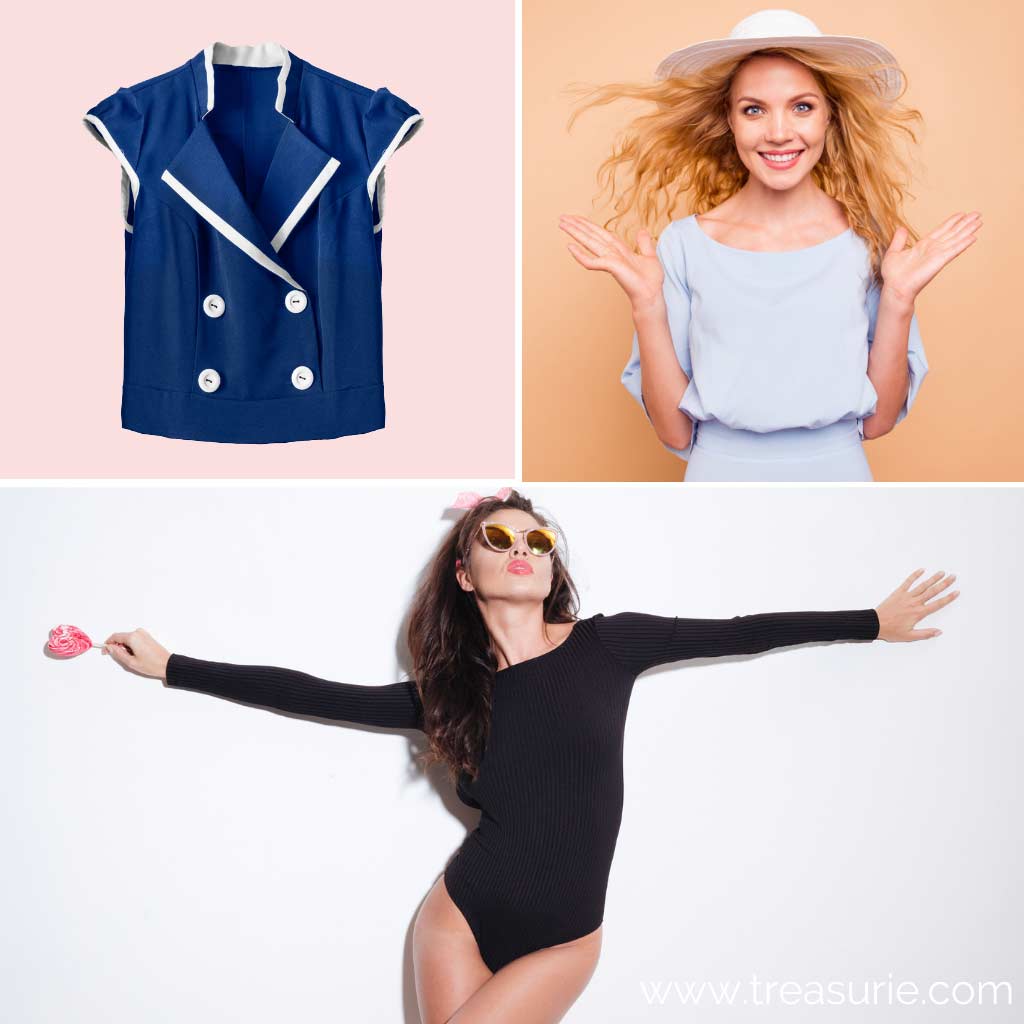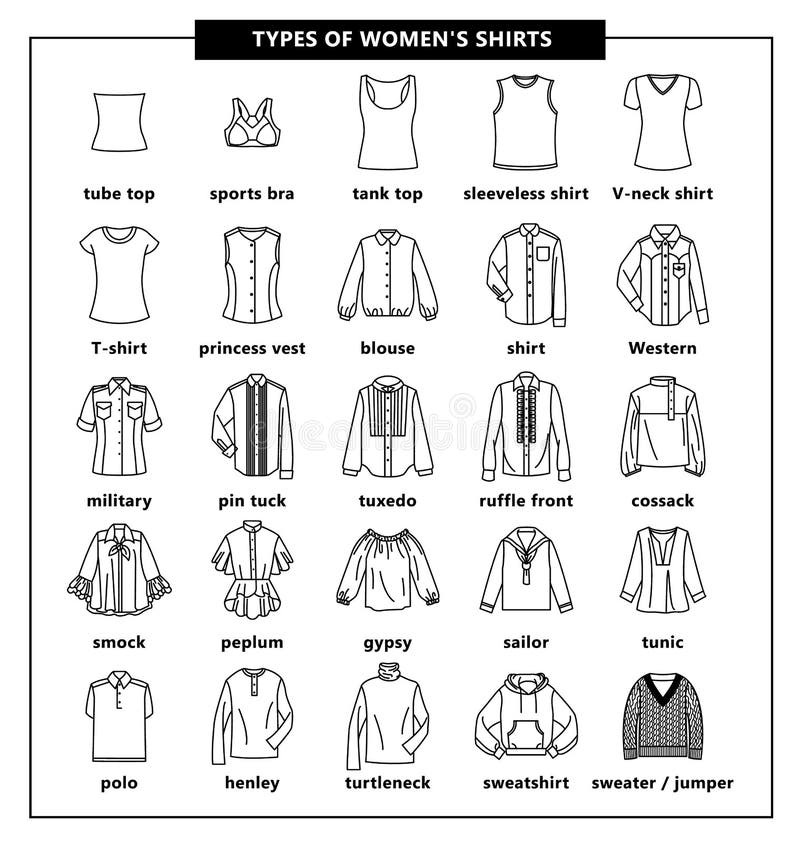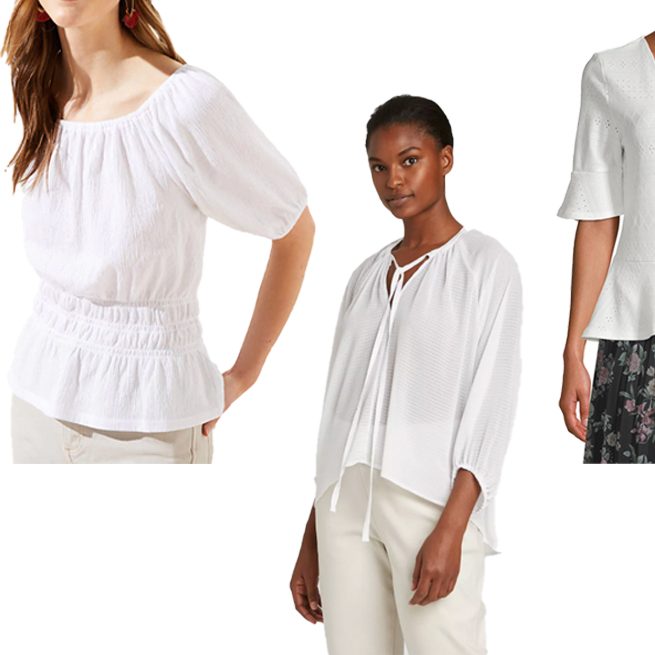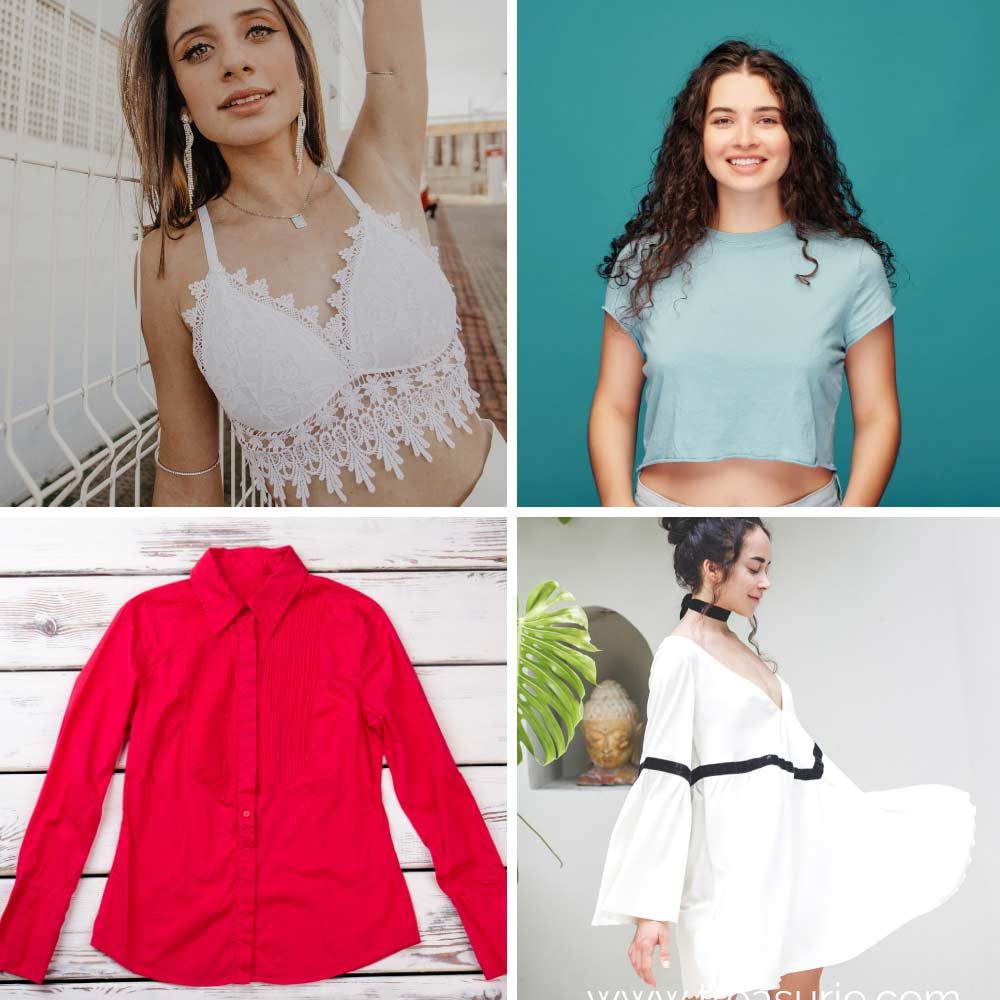What is considered a blouse? Blouses are a staple in many wardrobes, known for their versatility and elegance. They come in various styles, fabrics, and designs, suitable for different occasions and personal styles. Despite their popularity, the term “blouse” can sometimes be confusing. This guide aims to clarify what is considered a blouse, exploring its definition, different types, historical context, and practical styling tips. We’ll delve into the distinctions between blouses and other tops, common fabrics, popular styles, and how to incorporate blouses into various outfits.
1. Defining a Blouse
Basic Characteristics
What is considered a blouse? A blouse is typically a loose-fitting upper garment that can be dressed up or down. Originally, blouses were primarily worn by women, but today, variations exist for all genders. The key characteristic of a blouse is its relaxed fit, which differentiates it from more form-fitting tops like T-shirts or tank tops. Blouses often feature design elements such as ruffles, bows, and pleats, adding to their sophisticated appearance.
Blouses are usually made from lightweight and breathable fabrics, making them suitable for both casual and formal settings. They can have various necklines and sleeves, ranging from short to long. The versatility and timeless elegance of blouses make them a fundamental piece in any wardrobe.
Distinguishing from Other Tops
Understanding what sets a blouse apart from other tops is essential. Unlike T-shirts and tank tops, which are generally casual and form-fitting, blouses are more tailored and often have embellishments. Button-down shirts may share some similarities with blouses but are typically more structured and often considered more formal or business-oriented.
What is considered a blouse? Blouses can be confused with tunics, but tunics are generally longer and can be worn as short dresses or long shirts. Blouses also differ from sweaters and sweatshirts, which are designed for warmth and are made from heavier fabrics. Recognizing these distinctions helps in identifying and selecting blouses for appropriate occasions.

2. Historical Context
Evolution of the Blouse
The history of the blouse dates back centuries. Initially, blouses were simple, loose-fitting garments worn by peasants in Europe. As fashion evolved, blouses became more stylized and tailored, gaining popularity in the 19th century as part of women’s everyday attire. By the early 20th century, blouses were a staple in women’s wardrobes, often paired with skirts or suits.
Over the decades, the design and function of blouses have transformed to reflect changing fashion trends and social norms. Today, blouses are celebrated for their flexibility and ability to adapt to various fashion environments, from casual settings to professional and formal occasions.
Influence on Modern Fashion
Modern fashion continues to be influenced by the evolution of blouses. Designers often revisit classic blouse styles, incorporating contemporary elements to create innovative designs. The blouse’s ability to balance comfort and elegance ensures its ongoing relevance in fashion. Iconic fashion booms, like the 1970s boho-chic and the 1980s power dressing, have all incorporated blouses in distinctive ways, solidifying their timeless appeal.
Current fashion trends also embrace diverse blouse styles, from minimalist designs to elaborate, embellished tops. The enduring presence of blouses in fashion underscores their versatility and the continued fascination with this essential garment.
3. Types of Blouses
Classic Blouse Styles
Several classic blouse styles remain timeless and versatile. The button-down blouse is perhaps the most recognized, suitable for office wear and formal contexts. The peasant blouse, characterized by its loose fit and often decorated with embroidery or lace, is perfect for casual and bohemian looks.
Other classic styles include the wrap blouse, which ties around the waist for a flattering silhouette, and the tunic blouse, longer in length and ideal for pairing with leggings or skinny jeans. Understanding these styles helps in selecting the right blouse for different occasions and personal preferences.
Contemporary Blouse Designs
In addition to classic styles, contemporary blouse designs offer a fresh take on this versatile garment. Off-the-shoulder blouses, crop blouses, and asymmetrical designs are popular choices for more modern and fashion-forward looks. Ruffle blouses and those with statement sleeves add drama and flair, making them ideal for special occasions or when you want to make a bold fashion statement.
These contemporary styles reflect current fashion trends and bring new dimensions to the traditional blouse. By incorporating both classic and modern designs, you can diversify your wardrobe and stay ahead of fashion trends.

4. Fabrics and Materials
Common Blouse Fabrics
Blouses are made from a wide range of fabrics, each offering different looks and comfort levels. Common fabrics include cotton, silk, chiffon, and polyester. Cotton blouses are breathable and versatile, suitable for everyday wear. Silk blouses offer a luxurious feel and are ideal for formal occasions due to their elegant drape and sheen.
Chiffon is lightweight and often used for blouses with a flowing, airy appearance, perfect for summer. Polyester is durable and easy to care for, making it a practical choice for workwear blouses. Understanding the properties of different fabrics helps in choosing blouses that meet your style needs and comfort preferences.
Specialty Fabrics
Specialty fabrics add a unique touch to blouses and are often used for high-end or designer pieces. Fabrics like satin, velvet, and lace can elevate a blouse, making it suitable for evening wear or special events. Satin blouses have a smooth, glossy surface that adds sophistication, while velvet provides a rich, textured look.
Lace blouses are delicate and feminine, often used as overlay fabrics to add intricacy and elegance. These specialty fabrics offer unique characteristics that can enhance your wardrobe, allowing you to choose blouses that stand out for their beauty and craftsmanship.
5. Styling Tips
Casual Styling
Blouses can be effortlessly styled for casual occasions. Pair a cotton or peasant blouse with jeans or denim shorts for a relaxed and comfortable look. Tuck a lightweight blouse into high-waisted pants or a skirt for a chic yet laid-back outfit. Casual shoes like sandals or sneakers complement this look, keeping it comfortable and stylish.
Accessories play a role in casual styling, too. Simple jewelry, a crossbody bag, and a pair of sunglasses can complete the outfit without overwhelming it. Play with different colors and patterns to keep your casual looks fresh and interesting.
Formal and Professional Styling
What is considered a blouse? Blouses are perfect for formal and professional wear when styled appropriately. A crisp button-down blouse paired with tailored trousers or a pencil skirt creates a polished and professional appearance. Layering with a blazer can add an extra level of sophistication and make the outfit suitable for business meetings or formal events.
For formal occasions, opt for blouses made from luxurious fabrics like silk or satin. Pair these with sleek trousers or a midi skirt, and complete the look with elegant accessories such as a statement necklace or a clutch. Heels or classic flats can enhance the sophistication of your outfit, ensuring you look refined and polished.

6. Sustainable Fashion Choices
Ethical Blouse Brands
With increasing awareness of sustainability in fashion, many brands now focus on ethical production practices. Brands like Everlane, Reformation, and People Tree offer blouses made with sustainable materials and fair labor practices. Shopping from these brands supports environmentally friendly practices and ensures that workers receive fair wages and safe working conditions.
Ethical brands often provide transparency about their production processes, allowing you to make informed choices about your purchases. By prioritizing ethical blouse brands, you contribute to a more sustainable fashion industry and invest in high-quality, durable clothing.
Tips for Sustainable Shopping
Sustainable shopping involves more than just buying from ethical brands. Focus on quality over quantity, selecting blouses that are well-made and versatile.
Consider second-hand shopping as a sustainable option. Thrift stores and online platforms like Poshmark and ThredUp offer a wide range of pre-loved blouses. Vintage pieces add unique flair to your wardrobe while reducing waste. Repairing and upcycling old blouses can also extend their lifespan and reduce environmental impact. Practicing sustainable shopping habits leads to a more mindful and eco-friendly wardrobe.
Caring for Your Blouses
Proper care extends the life of your blouses, making your wardrobe more sustainable. Always check the care label for washing and drying instructions. Hand wash delicate fabrics like silk and lace to prevent damage, and use a gentle detergent. Hang blouses to dry whenever possible to maintain their shape and fabric integrity.
For blouses prone to wrinkling, use a steamer or iron them on the appropriate setting. Store blouses on hangers to prevent creases and save space. Taking good care of your blouses ensures they remain in excellent condition and a staple in your wardrobe for years to come.
What is considered a blouse? In conclusion, a blouse is a versatile and essential part of any wardrobe, defined by its relaxed fit and range of styles. Understanding the characteristics of blouses, distinguishing them from other tops, and exploring their historical significance enriches your fashion knowledge. By incorporating classic and contemporary blouse styles, choosing suitable fabrics, and applying practical styling tips, you can create a variety of looks for different occasions. Embracing sustainable fashion practices further enhances your wardrobe’s value and longevity, ensuring you enjoy your blouses for many years.
